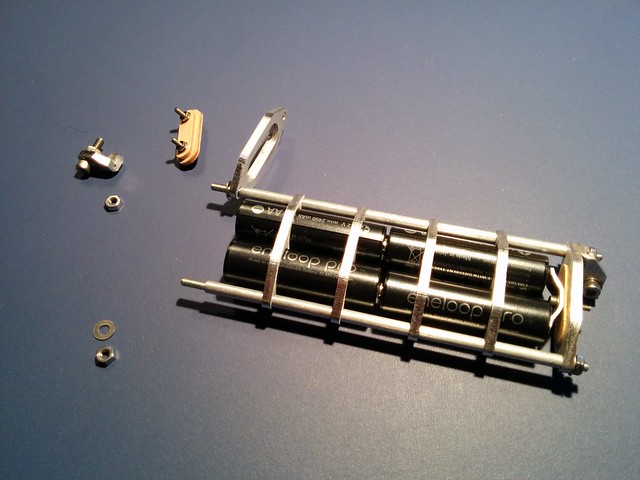Lithium Battery Maintenance-Charging and Cycle Life
Mar 09, 2020 Pageview:1683
Is it OK to leave a lithium battery on the charger?
A while back, the old and traditional battery technologies were sensitive to charge, and therefore, leaving them on the charger after they get to full charge could cause potential damage. These batteries used to overcharge, and thus, may overheat and then go into thermal runaway, which could ultimately cause spontaneous combustions and explosions at times.
However, modern lithium batteries come pre-installed with safety measures that prevent it from being overcharged. The cells were designed in a way that once they attain maximum charge capacity, they cut off the current being supplied, and the battery stops being charged. Also, many modern chargers turn off automatically after hitting 100% charge capacity on the gauges.
When should you charge your lithium battery?
There are many myths surrounding battery charging habits that tend to leave the users confused and following the wrong practices. If you intend to charge your lithium battery, the safest and most preferred time to do it is after using about 80% of its capacity. Partial charges are also suitable for lithium batteries because they don’t undergo a memory effect. Also, charging your battery once every time they reach 0% once a month is appropriate.
How do you extend your lithium battery?
People don’t understand that how they care for their batteries dictates how the current charge capacity may last and its entire lifespan. Usually, the battery manufacturer gives an expected lifespan for their cells based on the tests conducted on it and the manufacturing process. However, many a time, our lithium batteries tend to fail before it even gets close to this estimated figure. The following serve as guidelines to help you get the most out of your lithium battery’s lifespan.
1.Always keep your batteries at room temperature
Room temperature falls between 20- & 25-degrees C. When you subject your battery to extreme conditions, the likelihood of it getting damaged is very high and especially if it is fully charged. When a fully charged lithium battery is subjected to elevated temperatures, the internal temperature rises, and the pressure also increases. The chemicals in the cells tend to be highly reactive. Once the pressure increases, thy become vigorous, and the cells undergo a process known as thermal runaway. This could ultimately lead to spontaneous combustions or explosions.
Very low temperatures could adversely lower the performance of your lithium battery as well by causing leaks. Thus the cells may be permanently damaged. As such, lithium batteries should always be kept at room temperature to preserve their lifespan in check and therefore extend their charge capacities.
2.Use the right type of charger
If you happen to charge your lithium battery using any charger, not only are you reducing its lifespan and performance, but you may also be exposing it to a lot of damage. When lithium batteries are charged with an improper charger, they can overheat and cause thermal runaways leading to fires and explosions, short-circuit or even burn out and leak.
As such, it would be wise to use the original charger intended for the battery at all times. If you don’t have access to the battery’s original charger, you can always find one that is suitable to charge lithium batteries as well because the original ones tend to be quite expensive. Also, never try to charge a lithium battery using another battery technology’s charger even if it’s the original one. For example, you cannot use a Nickel-Cadmium battery charger on a lithium battery, as this could damage it.
3.Avoid completely discharging your battery
NiCad batteries tend to suffer from charge memory, and this made them vulnerable to partial discharge cycles. However, lithium batteries are not affected by such kind of problems and therefore, does not need full discharges; thus, advisable to perform regular partial-discharges. In case a lithium battery is discharged way below 2.5V per cell, the safety circuit built into it tends to open, leaving the battery in a dead state. Using an original charger on a dead battery will be of no use as only battery analyzers with boost function can recharge them.
As another safety precaution, you should never try to recharge a dead lithium battery if it had been stored in that state for extended periods. Battery scientists advise that you should allow your lithium battery to discharge its capacity once in every 30 days completely. This is because consistent partial discharging them can subject them to a condition known as digital memory. This problem tends to decrease the accuracy of your device’s power gauge. As such, you should let the battery discharge to its cut-off point, and not below it, then recharge for the gauge to be recalibrated.
4.Store the batteries in the right capacity and a cool place
If you happen to have an extra battery that is similar to the original one, storing it at full capacity for extended periods tends to reduce the lifespan of the cell. The spare won’t last as long as the original one, even if you use it less. If you intend to store a lithium battery for a long time, it is recommended that you charge or discharge it up to about 40% of its total capacity. Also, do not store the cells in the freezer as many opinions would suggest because extremely low temperatures tend to damage the cells. A refrigerator should do the trick.
Furthermore, always store the batteries in a cool and dry place, preferably around 15°C and away from any moisture and sunlight.
5.Keep the batteries clean and dry
Dust, salt, and moisture can corrode your battery terminals. It is therefore advisable to use a clean cloth to dry the battery terminals and keep it dry of moisture. Make sure that wherever you place your battery is not damp and that the terminals are always dry.
Final thoughts
Manufacturers for modern lithium batteries have placed in safety measures into their designs for charging purposes. These measures protect a battery during charging periods to prevent damaging the cells. It is up to the user to follow the right charging habits to ensure that their battery’s condition is in check.
- Prev Article: Lithium Battery Flight Ban-Reasons And Results
- Next Article: Battery Management System for Lithium-ion Batteries-Need and Working
Leave Message
Hottest Categories
-
Hottest Industry News
-
Latest Industry News












